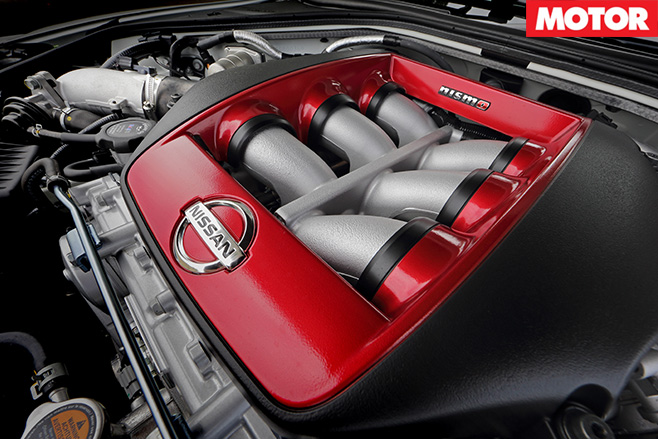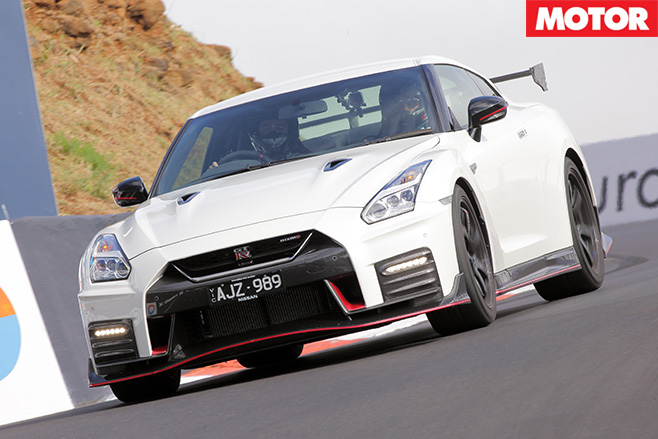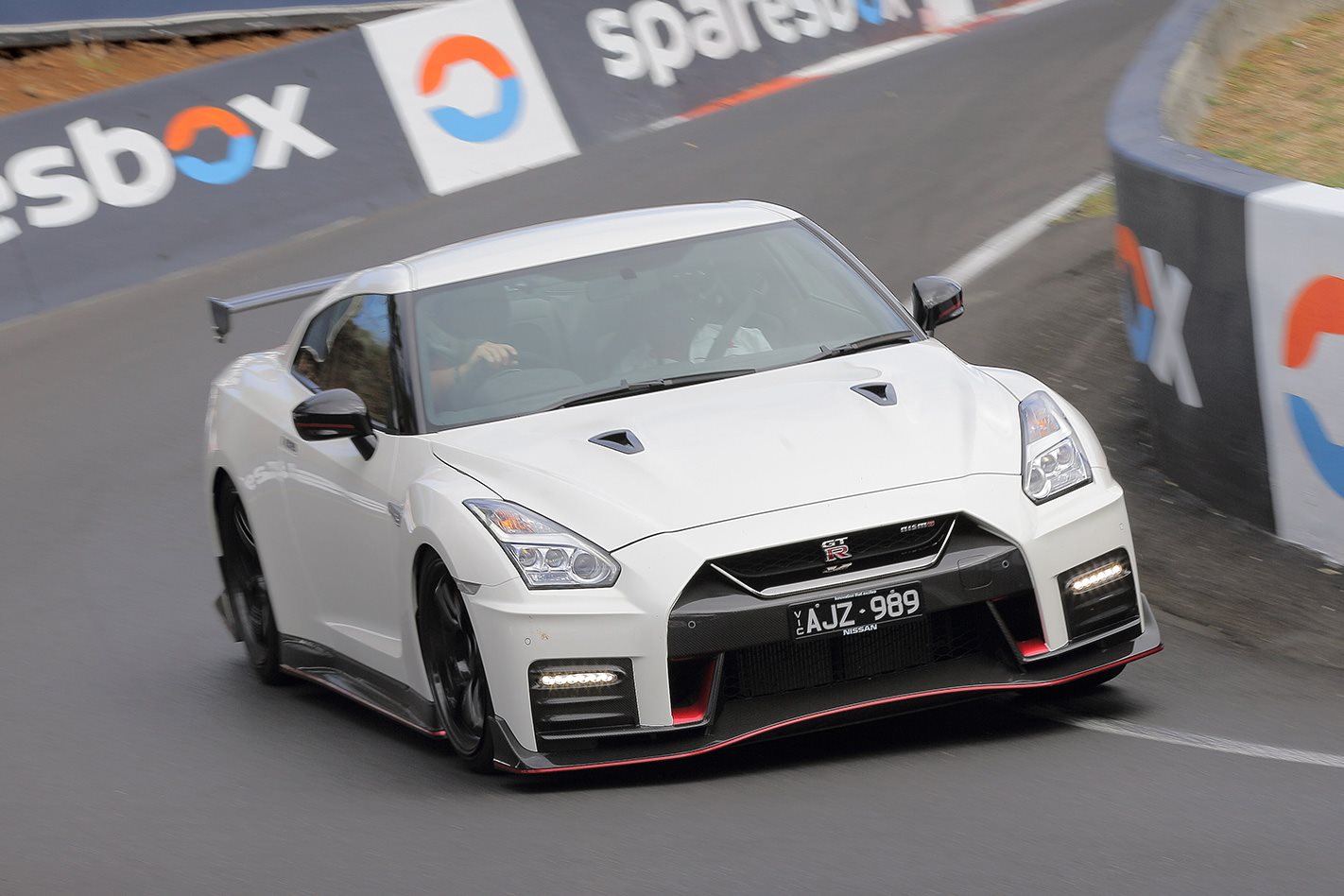Given Australian consumers’ well-documented penchant for high-performance, high-end sub-brands, it seem a bit odd that Nissan’s Nismo warriors haven’t been seen here before now.
That said, Nissan is making up for lost time by bringing us the biggest, baddest Nismo-branded car there is; the GT-R Nismo, complete with GT3 customer race-car boost-tech and a price-tag with more compression (probably chest compressions when you hear what the number is).
Forget that it’s been available in the US, Europe and Japan since MY14…it’s here now and that’s what matters.

That starts under the bonnet where the standard 3.8-litre V6’s turbochargers have been replaced by larger units with the same part-number as those on the GT3 competition car we saw running in the Bathurst 12-hour and other global race events.
Throw in individual spark timing for each cylinder and an upgraded fuel pump, and you’re looking at a 22kW increase to 441kW at 6800rpm and 652Nm between 3600 and 5600rpm.

Downforce is the body’s other big job, and to see to that, the Nismo gets a bunch of carbon-fibre doo-dads including a widened front bumper, tapered rear bumper, side skirts and a monster rear wing.
The detail stuff is pretty intriguing, too. There are carbon-fibre brake ducts, 20 x 10-inch front wheels with knurling inside the bead are to stop the tyre turning on the rims, forged alloys which contribute to an overall 2.9kg weight reduction and carbon Recaros.

Now, given that the original GT-R was never really applauded for its ride quality, upping the spring rate by something like 300 per cent should make it more or less undriveable.
True, even in Comfort, you will – on typical back-roads – spend a fair bit of time with your tail above your head and there still doesn’t seem to be a whole lot of difference between the boulevard and track suspension settings.

That other GT-R bogey – a clunky, truculent gearbox – still contributes the odd thunk and clang, mainly when changing down. But to be honest, it’s so in keeping with the track-inspired feel of the thing, I think I actually quite like this level of unashamed mechanical-ness. Rolls Royce is unlikely to copy it, but you get the idea…
The other first impression is that the Nismo feels very racy in the way it feeds back through the helm. There’s a clarity to the chat it wants to have with you and the over-riding impression is that there’s lots of castor on board along with a heap of roll-stiffness.

Actually, it almost feels bit fidgety as if there’s not much transition between apexed and not-yet-apexed, but all that grip saves the day. At which point, you’re back on the noise and trying to anticipate the next bumpy stretch.
Ah yes, that grunt. Not too many road-going cars can boast 600 horsepower, so the yardstick required to truly understand that is not one that everybody will be able to locate at the time. But trust me when I say that it honestly feels like every one of those neddies is present and accounted for and champing at the goddam bit.

And like all good, really, truly fast cars, 200 is just another mark on the speedo. It means nothing, and the GT-R will surge past it while ever you’re game to keep pouring on the coals. And it’ll do it even up a steep hill like Mountain Straight at Bathurst.
How do I know? Because for reasons known only to its corporate head-shrinkers, Nissan took advantage of a Mount Panorama circuit, still in race trim after the 12-Hour, to let us loose.

But even at those speeds, it was obvious the GT-R Nismo is dead-set up for it. A more track-ready car you will struggle to find in new-car showrooms. And even when Cody and I swapped chairs and the pace and level of commitment kind of doubled (that’s how it looked through the windscreen, anyway) old Godzilla just got on with it.
Actually, I should have made Crocker write this bit (no point just one of us being outside our comfort zone).
4.0 OUT OF 5 STARS
SPECS Engine: 3799cc V6, DOHC, 24v, twin turbo Power: 441kW @ 6800rpm Torque: 652Nm @ 3300rpm Weight: 1739kg 0-100km/h: 2.6 sec (claimed) Price: $299,000
LIKES: There’s track-ready and then there’s this.
DISLIKES: How much?!





